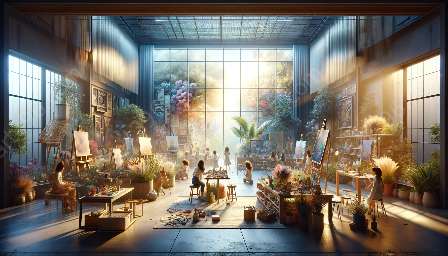Industrial design plays a significant role in shaping the development of products and influencing consumer behavior. The process of industrial design involves creating and developing concepts, products, and systems that optimize function, value, and aesthetics for the mutual benefit of both the user and the manufacturer.
Impact on Product Development
Industrial design has a substantial impact on product development. It encompasses a wide range of activities, including user research, concept development, prototyping, and testing. By considering the needs and preferences of the end users, industrial designers create products that are not only visually appealing but also functional and user-friendly. This user-centric approach enhances product development by ensuring that the final products meet the demands and expectations of the consumers.
Moreover, industrial design delivers innovative solutions to technical and ergonomic challenges, leading to the creation of products that are efficient, durable, and aesthetically pleasing. Through the integration of advanced materials and cutting-edge technologies, industrial designers contribute to the evolution of products that are sustainable, environmentally friendly, and capable of meeting the evolving needs of the market.
Impact on Consumer Behavior
Industrial design has a profound influence on consumer behavior. Well-designed products have the power to evoke emotional responses, establish brand loyalty, and differentiate themselves from competitors. Consumers are drawn to products that offer not only practical functionality but also an engaging and aesthetically pleasing experience. From the packaging of the product to the usability and visual appeal of the item, industrial design shapes the way consumers perceive and interact with products.
Additionally, industrial design has the ability to communicate the values and identity of a brand. Through the use of distinctive visual elements, such as logos, colors, and typography, industrial design contributes to the establishment of a brand's image and personality. This, in turn, influences consumer perceptions and purchasing decisions.
Relationship with Design Education
The impact of industrial design on product development and consumer behavior is closely intertwined with design education. Design education equips aspiring designers with the skills, knowledge, and creative mindset necessary to understand and respond to the needs of users and to contribute to the enhancement of consumer experiences. By fostering an understanding of the principles of user-centered design, sustainable practices, and innovative technologies, design education prepares students to become adept at shaping the future of product development and consumer behavior through industrial design.
In addition, design education promotes critical thinking and problem-solving abilities, enabling students to approach design challenges with inventiveness and ingenuity. Moreover, it encourages collaboration and multidisciplinary teamwork, which are essential aspects of industrial design and the product development process. As a result, design education plays a pivotal role in nurturing the next generation of industrial designers who will continue to shape the impact of industrial design on product development and consumer behavior.
Relationship with Arts Education
Industrial design shares a symbiotic relationship with arts education. Arts education provides students with a holistic understanding of aesthetics, visual communication, and artistic expression, all of which are integral components of industrial design. Through arts education, individuals develop an appreciation for form, color, texture, and composition, which directly informs their approach to design and the creation of visually captivating products.
Furthermore, arts education fosters creativity and enhances the ability to think outside the box, traits that are invaluable in the field of industrial design. By encouraging experimentation with different artistic mediums and techniques, arts education nurtures the artistic sensibilities of individuals, preparing them to utilize their creative talents in the context of industrial design and product development.
In conclusion, the impact of industrial design on product development and consumer behavior is immense, and its relationship with design education and arts education is fundamental to its continued evolution. By recognizing the interconnectedness of these aspects, we can continue to cultivate an environment that fosters innovative and user-centric design, ultimately shaping the future of the products we use and the ways in which we interact with them.

